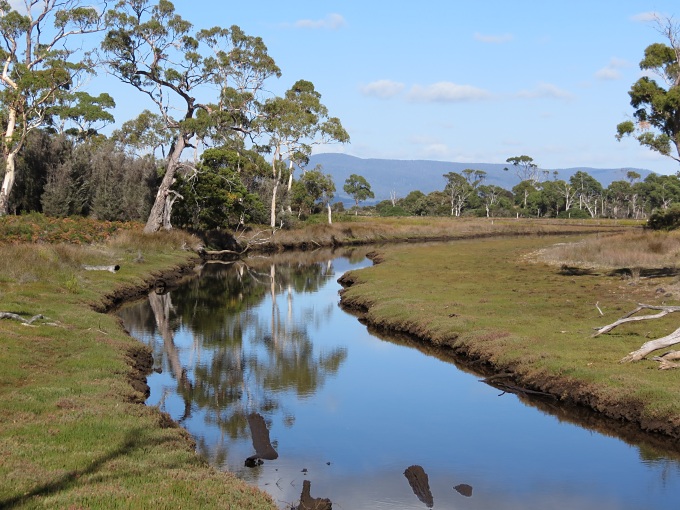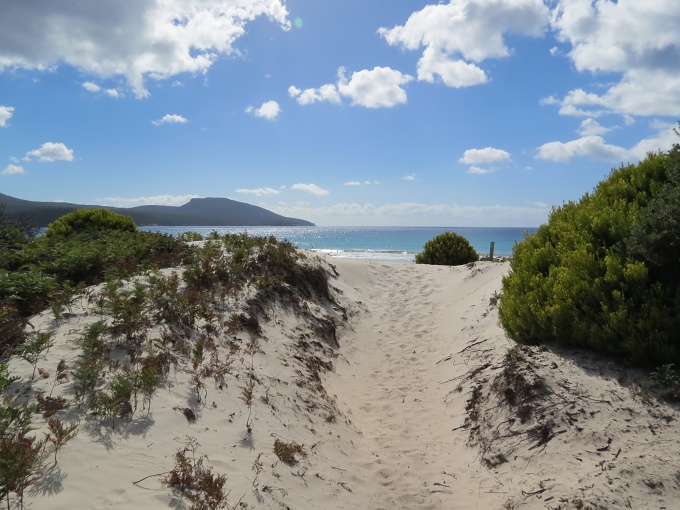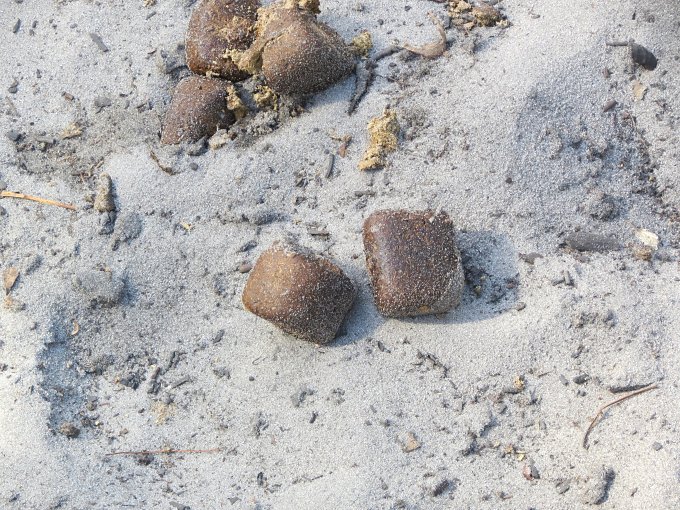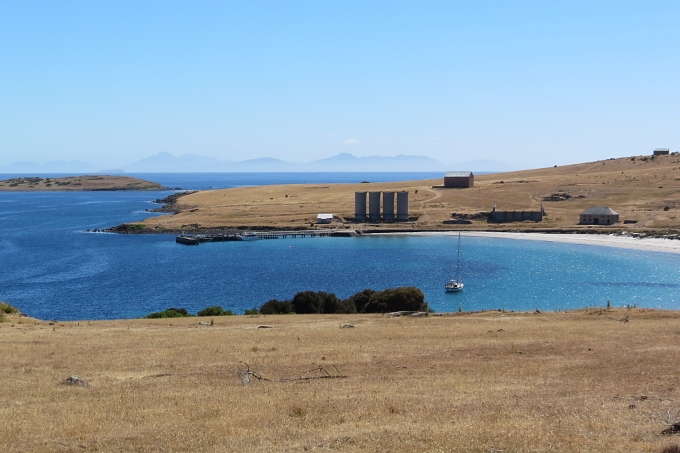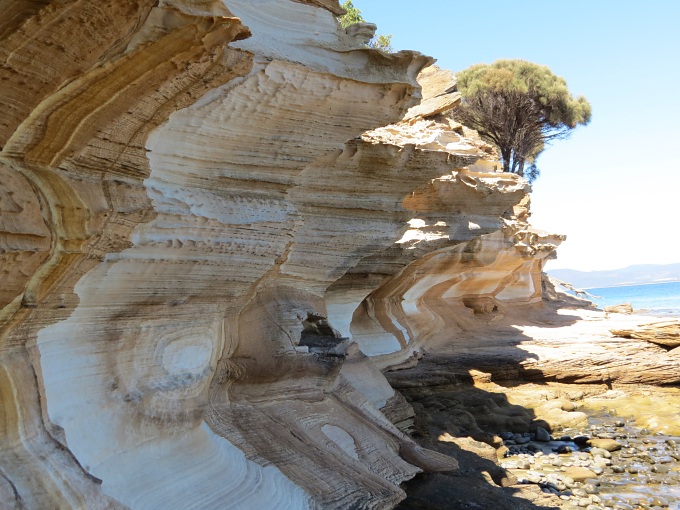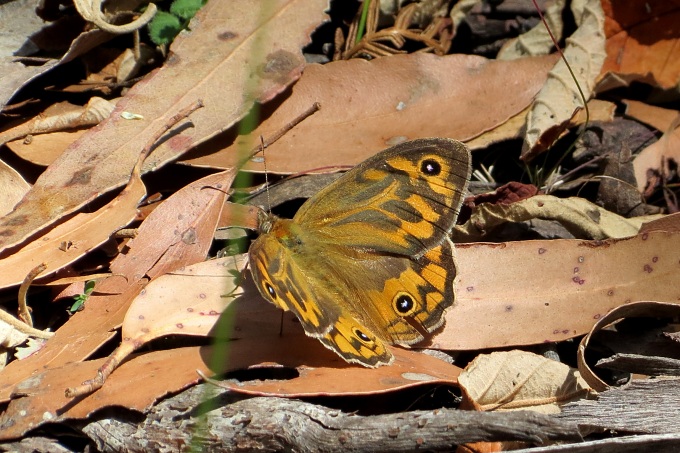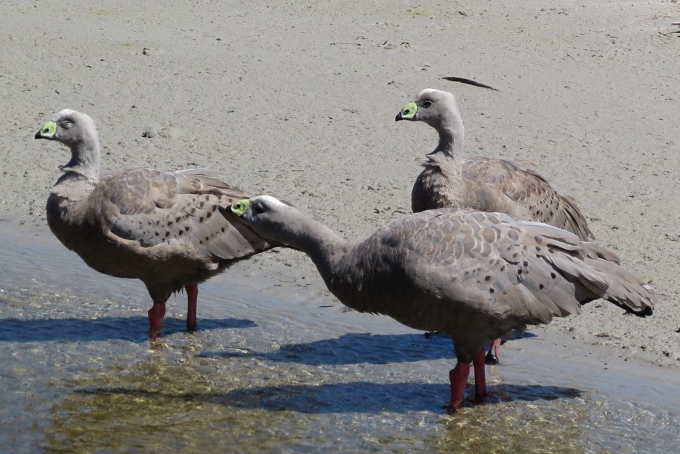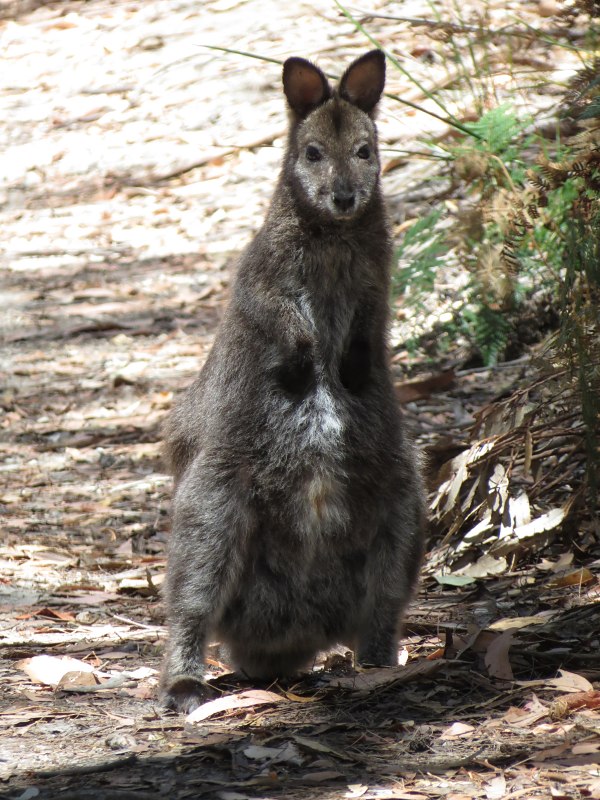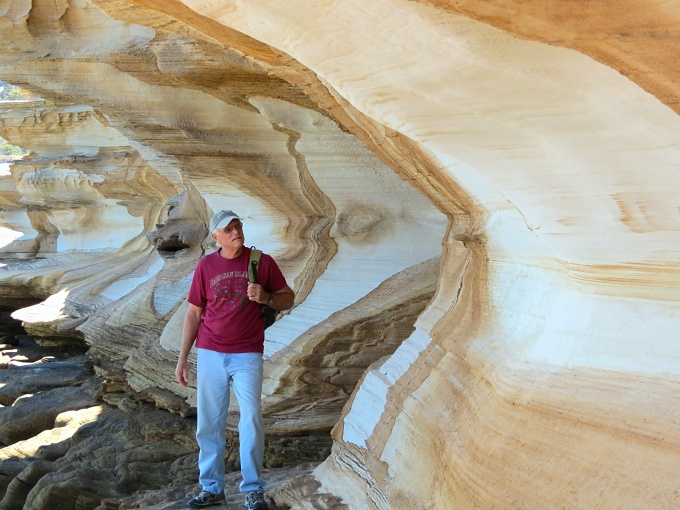Return to Chinaman's Bay - Maria Island
/When we were in Chinaman's Bay on the southwest side of Maria Island the other day, the winds were not conducive to going ashore and exploring. Today, however, the light easterlies were perfect for heading in to see what we could see. The bay is actually called Shoal Bay, but was nicknamed Chinaman's Bay for the Chinese men who fished for abalone in this shallow bay in the 1860-1870s and the name stuck. It's quite popular with yachties.
We were up at 0600 and the anchorage was millpond calm. We headed ashore in the dinghy and beached it. There's a sandy track just 50m (~50yds) off the beach. We crossed the tombolo to Riedle's Bay on the other side of the island. It's only a .5km (.2 miles) walk across at this point.
We could hear the surf crashing before we climbed a small sandy hill and saw a large crescent beach spread before us, totally deserted except for some oystercatchers dodging the waves and looking for breakfast.
We were hoping to see more wildlife and birdlife today by coming in early. The track was thick and sandy as we followed it north towards French's Farm, a campsite we'd noted on the island map. Dense bush, ferns and banksias formed the undergrowth for the eucalypt forests that cover the island. When we crossed a wooden bridge, it was obvious that we had exited the tombolo because the track immediately became dirt and gravel. There's not much at French's Farm although it looked like a great place for camping. We saw the remnants of French's woolshed, a cottage and a few other outbuildings from the 1930's.
Birds were particularly noticeable this morning. Squawks, peeps, chirps, caws … everybody had something to add to the morning symphony. We saw curawongs, yellow-tailed black cockatoos, eastern rosellas, yellow wattlebirds, black-headed honeyeaters and one obliging scarlet robin. There were lots of different animal prints on the beach and along the sandy track, but apart from one kangaroo and a few wallabies, we didn't spot any other animals.
We had hoped to see wombats which are supposedly numerous here. Some areas were rife with wombat holes and it was hard to avoid stepping in them.
We spotted lots of wombat scat, very distinctive by its square shape. I was hoping to be able to do a “Wombat Bob, Square Poo” blog post, but alas, Wombat Bob never showed up. Maybe another time. Forgive the poo pic, but it's so unique I had to share it with you.
| Days and Ways to Celebrate |
| A daily list of mostly obscure holidays and fun ways to celebrate them. |
| Backwards Day |
| Wear your clothes backwards today. You can also try eating your dessert first and your salad last. Somewhere in between you need to eat some Brussel Sprouts because it's...yup, you guessed it |
| Eat Brussel Sprouts Day |



